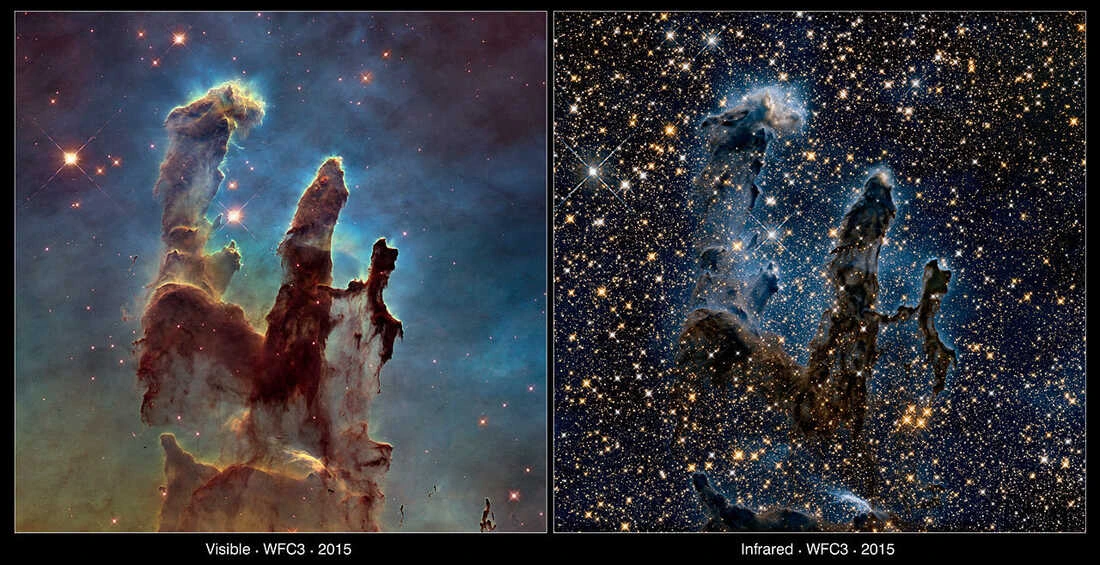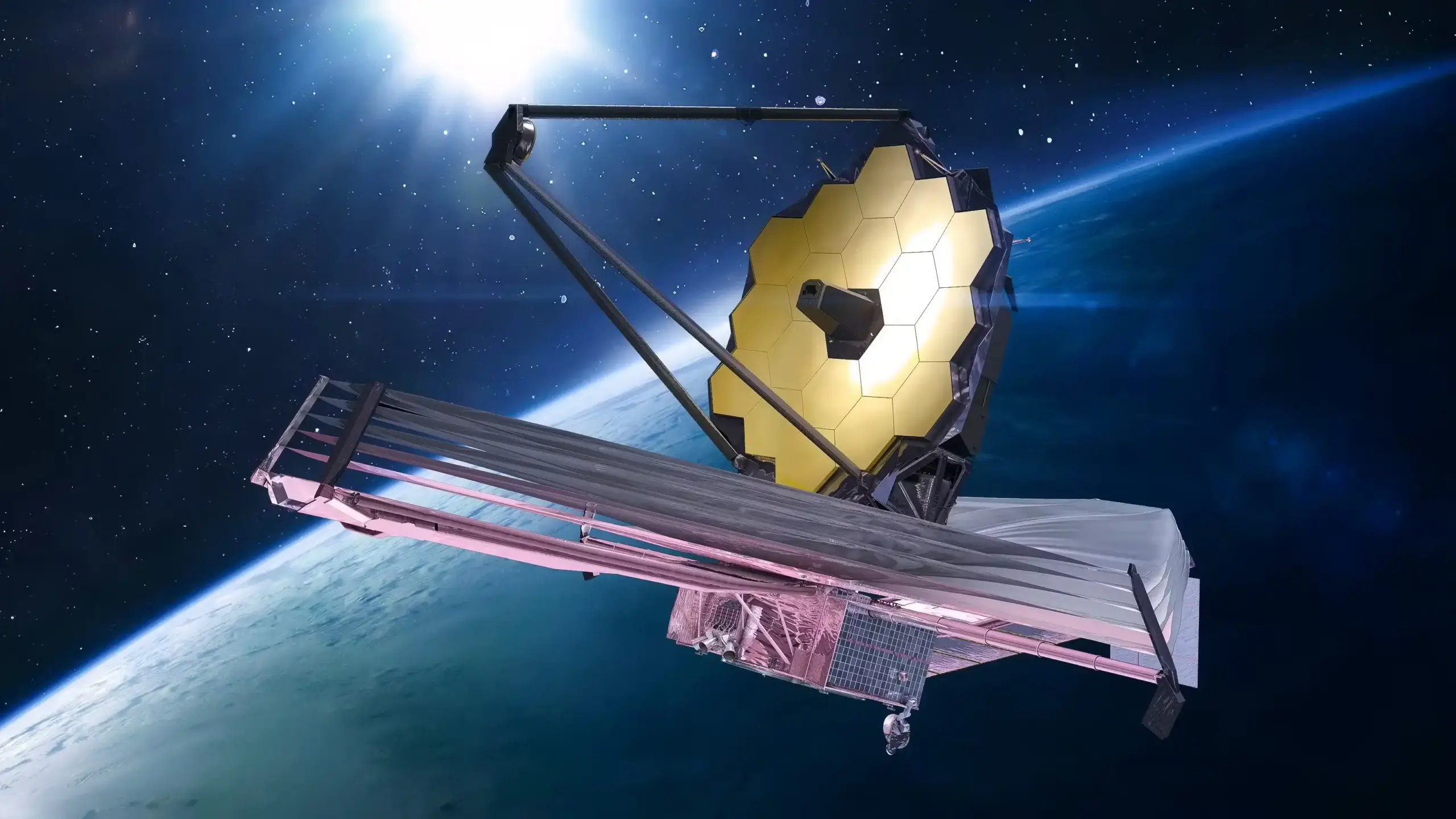Table of Contents
- 1 History and Development of the James Webb Space Telescope
- 2 Key Features and Capabilities of the James Webb Space Telescope
- 3 Importance of the James Webb Space Telescope in Astronomical Research
- 4 Comparison Between the James Webb Space Telescope and the Hubble Space Telescope
- 5 Challenges and Obstacles Faced in the Construction and Launch of the James Webb Space Telescope
- 6 Expected Scientific Discoveries and Breakthroughs from the James Webb Space Telescope
- 7 Collaboration and International Participation in the James Webb Space Telescope Project
- 8 Future Prospects and Potential Upgrades for the James Webb Space Telescope
- 9 The Impact of the James Webb Space Telescope on Our Understanding of the Universe
- 10 Author
Get ready to embark on an extraordinary journey through the vast expanses of space with the James Webb Space Telescope. This groundbreaking telescope, poised to revolutionize our understanding of the universe, is set to be the most powerful and advanced space observatory ever created.
With its cutting-edge technology and unrivaled capabilities, the James Webb Space Telescope is like no other. It will enable scientists to peer deep into the cosmos, capturing stunning images and collecting valuable data from distant stars and galaxies.
Equipped with state-of-the-art instruments, this next-generation telescope will shed light on some of the greatest mysteries of the universe, from the formation of planets and stars to the origins of galaxies. Its enhanced sensitivity and broader spectral range will allow us to explore regions of the universe yet unexplored, revealing secrets that have remained hidden for billions of years.
Get ready to be awestruck by the breathtaking discoveries that await us with the launch of the agen togel terbesar James Webb Space Telescope. As we unlock the secrets of the universe, our understanding of our place in it will undoubtedly be forever transformed.

History and Development of the James Webb Space Telescope
The James Webb Space Telescope, named after NASA’s second administrator, is the result of years of planning and collaboration between NASA, the European Space Agency (ESA), and the Canadian Space Agency (CSA). The origins of this ambitious project can be traced back to the early 1990s when discussions began about the need for a successor to the Hubble Space Telescope.
The development of the James Webb Space Telescope faced numerous challenges, both technical and financial. The telescope had to be designed to withstand the harsh conditions of space, including extreme temperatures and radiation. Its primary mirror, composed of 18 hexagonal segments, had to be carefully engineered and assembled to ensure precision and accuracy.
Construction of the telescope took place across multiple locations, with major components being built in different countries. The primary mirror segments were manufactured in the United States, while the spacecraft and sunshield were developed in Europe. The complexity of the project required meticulous planning and coordination to ensure all components would fit together seamlessly.
Key Features and Capabilities of the James Webb Space Telescope
The James Webb Space Telescope is equipped with a range of cutting-edge instruments that will allow it to capture images and collect data with unprecedented clarity and precision. One of its key features is its large primary mirror, measuring 6.5 meters in diameter, which will provide significantly higher resolution and sensitivity compared to the Hubble Space Telescope.
Another notable feature of the James Webb Space Telescope is its suite of scientific instruments, each designed to perform specific observations and measurements. The Near Infrared Camera (NIRCam) will enable astronomers to study the formation of stars and galaxies, while the Near Infrared Spectrograph (NIRSpec) will analyze the chemical composition of celestial objects.
Additionally, the Mid-Infrared Instrument (MIRI) will allow scientists to study the formation of planets and the evolution of galaxies, while the Fine Guidance Sensor/Near InfraRed Imager and Slitless Spectrograph (FGS/NIRISS) will aid in the detection and characterization of exoplanets.
Importance of the James Webb Space Telescope in Astronomical Research
The James Webb Space Telescope is poised to revolutionize our understanding of the universe by enabling scientists to observe celestial objects and phenomena that were previously beyond our reach. Its advanced capabilities, particularly in the infrared range, will allow us to study the earliest galaxies, trace the formation of stars and planets, and investigate the atmospheres of exoplanets.
By studying the universe at different wavelengths, the James Webb Space Telescope will provide valuable insights into the processes that shape our cosmos. It will help answer fundamental questions about the origins of galaxies, the formation of stars, and the conditions necessary for life to exist on other planets.
Furthermore, the telescope’s ability to observe distant objects will allow us to peer back in time, providing a window into the early universe. This will help scientists better understand how our own solar system and planet Earth came to be.
Comparison Between the James Webb Space Telescope and the Hubble Space Telescope
While the Hubble Space Telescope has been a cornerstone of astronomical research for over three decades, the James Webb Space Telescope represents a significant leap forward in terms of capabilities and technology. The Hubble Space Telescope operates primarily in the visible and ultraviolet wavelengths, while the James Webb Space Telescope focuses on the infrared range.
The key advantage of observing in the infrared is that it allows us to see through cosmic dust clouds, which can obscure visible light. This will enable the James Webb Space Telescope to study regions of the universe that were previously hidden from view, such as the birth of stars in dusty nebulae.
Additionally, the James Webb Space Telescope’s larger primary mirror and more advanced instruments will provide higher resolution and sensitivity compared to the Hubble Space Telescope. This will allow scientists to observe fainter and more distant objects, expanding our understanding of the universe.
Challenges and Obstacles Faced in the Construction and Launch of the James Webb Space Telescope
The construction and launch of the James Webb Space Telescope have not been without their share of challenges and obstacles. The sheer size and complexity of the telescope required innovative engineering solutions and careful planning.
One of the main challenges faced was the development of the sunshield, which is crucial for protecting the telescope from the Sun’s heat and light. The sunshield consists of five layers of a special material that can withstand extreme temperatures. Ensuring the proper deployment and alignment of the sunshield was a critical and technically demanding task.
Another challenge was the testing and integration of the telescope’s various components. Each component had to undergo rigorous testing to ensure its functionality and performance in the harsh conditions of space. Additionally, the integration of different components from multiple countries required close collaboration and coordination between international partners.
The launch of the James Webb Space Telescope also presented its own set of challenges. The telescope will be launched aboard an Ariane 5 rocket from the European Spaceport in French Guiana. The precise timing and trajectory of the launch had to be carefully calculated to ensure the telescope reaches its intended orbit around the Sun.
Expected Scientific Discoveries and Breakthroughs from the James Webb Space Telescope
As the most powerful and advanced space observatory ever built, the James Webb Space Telescope is expected to make groundbreaking discoveries and contribute significantly to our understanding of the universe.
One of the key areas of research will be the study of exoplanets, planets that orbit stars outside our solar system. The James Webb Space Telescope will be able to analyze the atmospheres of exoplanets, searching for signs of habitability and potential biosignatures.
Additionally, the telescope’s enhanced sensitivity and broader spectral range will allow scientists to study the formation and evolution of galaxies in unprecedented detail. By observing distant galaxies, astronomers hope to gain insights into the processes that shape the universe on a cosmic scale.
Furthermore, the James Webb Space Telescope will help us understand the formation of stars and planets by observing the dusty disks around young stars. This will provide valuable insights into the conditions necessary for the formation of planetary systems, including our own.
Collaboration and International Participation in the James Webb Space Telescope Project
The development and construction of the James Webb Space Telescope have been truly international efforts, with NASA, the European Space Agency (ESA), and the Canadian Space Agency (CSA) collaborating closely on the project. Each agency has contributed key components and expertise, making the telescope a truly global endeavor.
NASA is responsible for the overall management of the mission, as well as the development of the primary mirror and the spacecraft. The European Space Agency has provided the sunshield, the Fine Guidance Sensor/Near InfraRed Imager and Slitless Spectrograph (FGS/NIRISS), and the Mid-Infrared Instrument (MIRI). The Canadian Space Agency has contributed the Fine Guidance Sensor (FGS).
This international collaboration has not only brought together the best minds and resources from around the world but has also fostered a spirit of cooperation and shared goals. The James Webb Space Telescope represents the collective efforts of nations working together to expand our knowledge of the universe.

Future Prospects and Potential Upgrades for the James Webb Space Telescope
Even before its launch, scientists and engineers are already looking ahead to the future of the James Webb Space Telescope. While the telescope is expected to operate for at least a decade, there are plans for potential upgrades and enhancements that could further improve its capabilities.
One area of potential upgrade is the addition of a coronagraph, a device that blocks out the light from a star, allowing astronomers to observe the surrounding exoplanets more easily. This would enable scientists to study exoplanet atmospheres with even greater precision and detail.
Another possibility is the development of new instruments that could be installed on the telescope. As technology advances, new scientific discoveries may require specialized instruments that can push the boundaries of our knowledge even further.
Furthermore, as the James Webb Space Telescope operates, scientists will continue to refine and improve data analysis techniques, allowing for more accurate and detailed interpretations of the observations. This iterative process will lead to a deeper understanding of the universe and the discoveries made by the telescope.
The Impact of the James Webb Space Telescope on Our Understanding of the Universe
The launch of the James Webb Space Telescope represents a new era in space exploration and astronomical research. With its advanced technology and unrivaled capabilities, the telescope is poised to revolutionize our understanding of the universe.
From studying the formation of stars and planets to investigating the atmospheres of exoplanets, the James Webb Space Telescope will provide valuable insights into the processes that shape our cosmos. Its ability to observe in the infrared range will allow scientists to peer through cosmic dust clouds and study regions of the universe previously hidden from view.
The international collaboration and cooperation that went into the development and construction of the James Webb Space Telescope highlight the power of working together to achieve common goals. This ambitious project demonstrates the ingenuity and determination of scientists and engineers from around the world.
As we eagerly await the launch of the James Webb Space Telescope, we can only imagine the breathtaking discoveries and breakthroughs that lie ahead. The telescope will forever transform our understanding of the universe and our place within it, leaving an indelible mark on the history of space exploration.
In conclusion, the James Webb Space Telescope stands as a monumental leap forward in our quest to understand the vast, mysterious cosmos. Its launch heralds a new age of discovery, promising to unravel the universe’s oldest secrets and illuminate our place within it. If you’ve found this exploration of the cosmos as fascinating as we do, you might also be interested in understanding the terrestrial dynamics of our own world.
We invite you to continue your journey of discovery by considering our insightful article on the Taiwan Election 2024. There, we delve into the political landscape of a key player on the global stage, offering analysis and perspectives that are as engaging and informative as the cosmic revelations of the James Webb Space Telescope.

